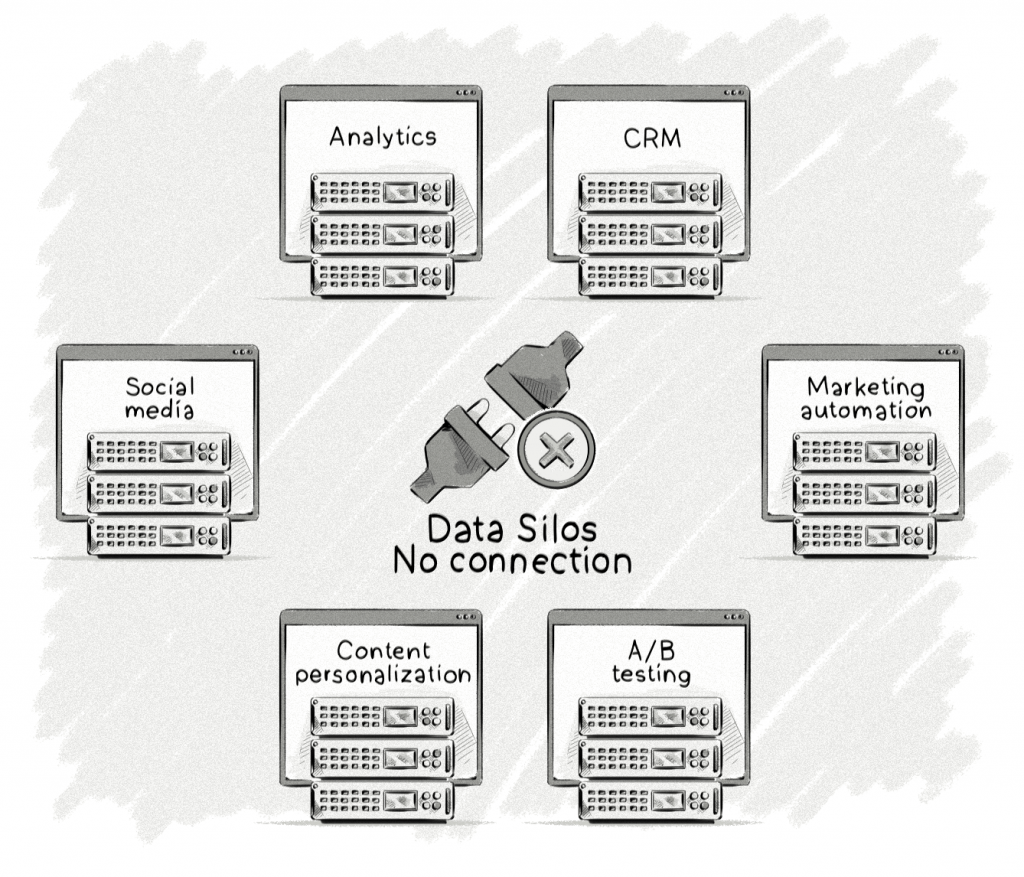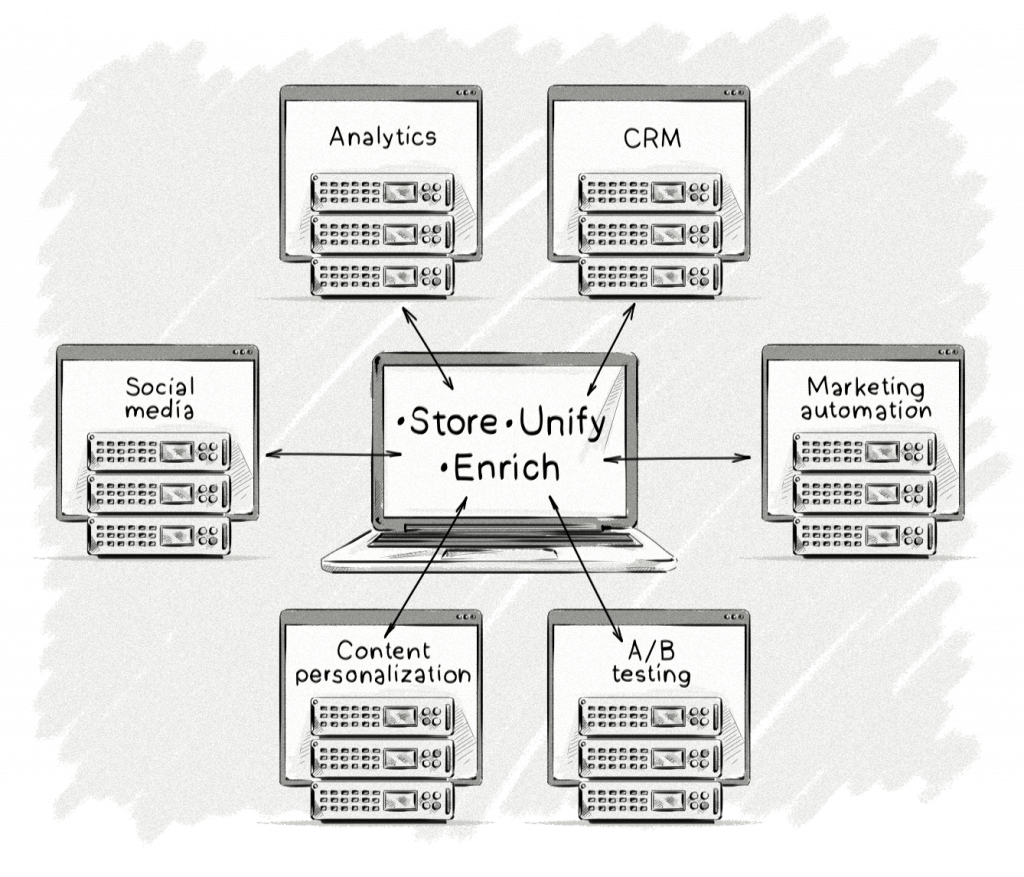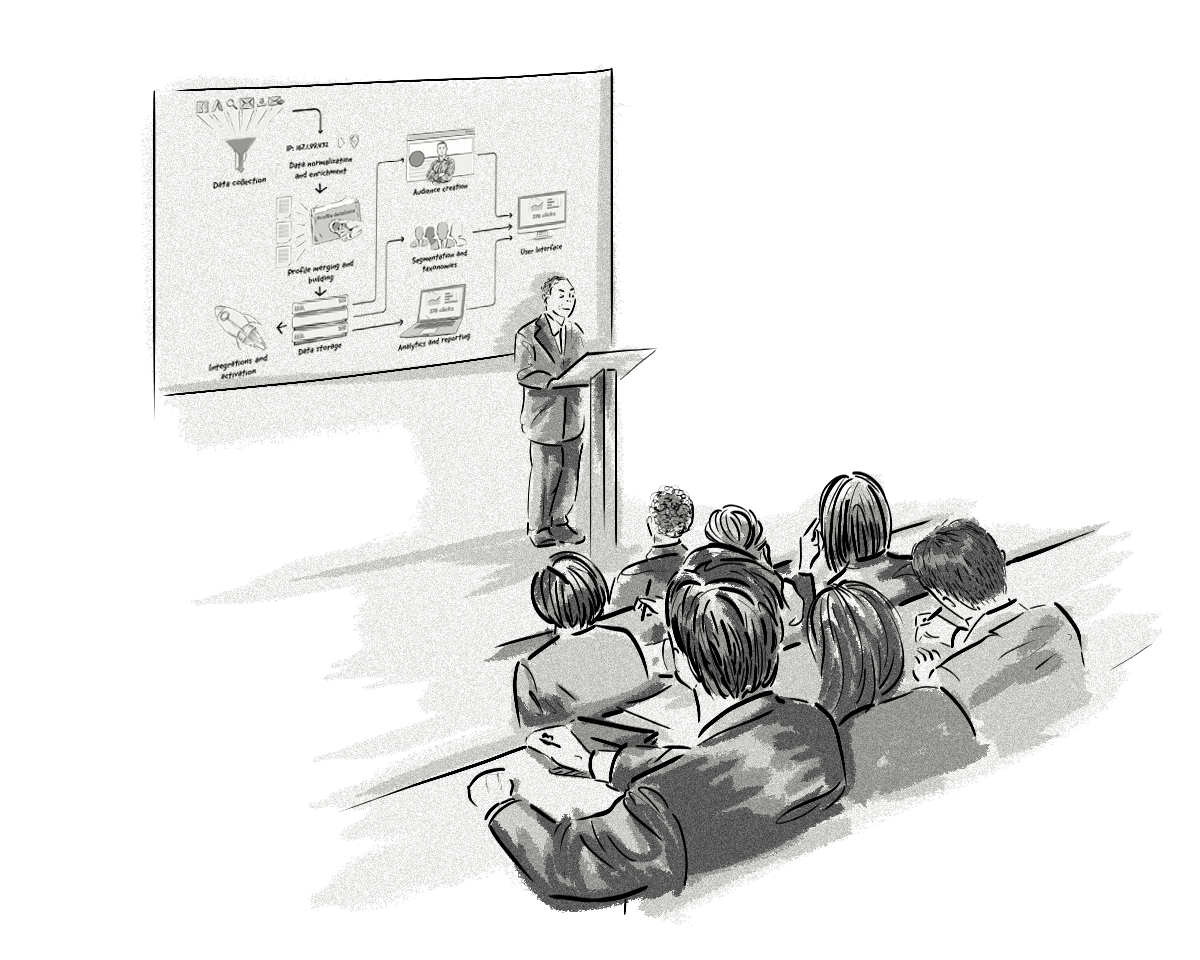In the early days of online marketing, marketers were faced with the problem of having limited information about customers. Targeting possibilities were minimal and online advertising was more hit or miss than today.
Now, the situation is completely different. We are dealing with an abundance of channels and sources of data, and the only problem is knowing how to conveniently collect and leverage it all in marketing efforts.
Combining all the data in one place is key to efficient marketing. While the information is generally available, it is usually scattered across multiple silos—databases, platforms, and systems that store a company’s data but aren’t connected with one another.
Creating a reliable image of the customer requires access to first-, second- and third-party data. This may entail gathering incredible amounts of historical behavioral information about the customer from across numerous sources and stitching it all together to achieve the most complete image of the customer.

What is a Customer Data Platform (CDP)?
A customer data platform (CDP) is a platform used by marketers to collect all the available data about the customer and aggregate it into a single database, which is integrated with and easily accessible from a number of other marketing systems and platforms used by the company.
Data Aggregated in a CDP Can Include
- Transactional data about past purchases
- Browsing history
- Demographic data
- Behavioral data
- Event data (clicks and file downloads, etc.)
- Data about product usage
- Partner and third-party data (optional)
While the acronym often appears in the context of ads, the application of CDPs is not limited to marketing only. Apart from marketing, CDPs serve a wide array of purposes, such as customer support. The goal is to aggregate various data sources (online and offline) and use them to compile a “view” of the customer in a single place, also referred to as a single customer view (SCV).
CDP technology is the cornerstone of campaign automation and customer-journey management, segmentation and data analysis, online advertising and marketing solutions, and real-time personalization.
How Does a Customer Data Platform Work?
The role of CDPs is to collect lots of data about customers who do business with a company, create a detailed image of the customer, and deliver effective, personalized communication across all channels.
Why is it important to gather so much information about the user in the first place? Simply because the more you know about your “perfect” customer, the easier it will be for you to implement lookalike modeling to find similar people you can target your marketing to.
This, in turn, requires deterministic and probabilistic algorithms. We’ve written about them in other posts on our blog.
The image below illustrates the role of a customer data platform:

What’s the Difference Between a CDP, CRM, and DMP?
Customer Data Platforms may seem very similar to CRMs and DMPs, as they are all responsible for collecting and storing data about customers. There are, however, certain differences in the ways they work.
Distinguishing Features of CDPs, CRMs, and DMPs
CDPs are the youngest platform of the three. They primarily use first-party data, and are based on real consumer identities (personally identifiable information, or PII). The information comes from various systems in the organization and can be enriched with third-party data. CDPs are mainly used by marketers to nurture the existing consumer base.
Here’s what you need to know about CDPs:
- CDPs are focused on marketing (communicating to known audience)
- They are focused on conversion, retention, and engagement marketing with an existing customer base.
- Primarily use PII and first-party data.
- A CDP typically leverages first-party data, but can be enriched with third-party data.
- CDPs are used by companies to keep user data in one place, and to access that information to implement personalized marketing strategies across multiple channels (e.g. web, ads, email, mobile).
DMPs, on the other hand, are primarily responsible for aggregating third-party data, which typically involves the use of cookies. In this way, a DMP is more of an AdTech platform, while a CDP can be considered a MarTech tool. DMPs are mainly used to enhance advertising campaigns and acquire lookalike audiences.
Here’s what you need to know about DMPs:
- They are focused on advertising (communicating to unknown audience)
- They typically leverage third-party data, with first-party data acting as an additional source of information.
- DMPs were built before Google and Facebook opened their custom audience APIs, offering the ability to merge first-party data with additional ad-network-provided targeting criteria.
- A DMP is designed to improve display ad targeting.
CRMs are very much like CDPs, but do not handle multiple data types and typically require lots of manual maintenance. Although they are used for similar purposes as a CDP, they are not efficiently scalable.
Here’s what you need to know about CRMs:
- CRMs are much like CDPs, but do not handle multiple data types.
- Use PII and first-party data.
- Usually require salespeople to manage its accounts.
What Can Marketers Achieve by Using a CDP?
In 1916, John Wanamaker, an American merchant and a prominent political figure widely considered to be the godfather of modern marketing, spoke his famous quote: “Half the money I spend on advertising is wasted; the trouble is, I don’t know which half.”
Fast forward a hundred years and marketers are facing the very same dilemma; this “wasted” money is the bane of modern marketing and advertising, just as it was back then.
Efficiency
Granted, no marketing efforts can consistently guarantee good results at minimal media spend, but marketers can vastly increase their success rate by advertising and marketing to the right people. This involves either communicating to a carefully selected audience, or to those who have already expressed interest in the product. Doing this would typically require proper and accurate segmentation, and a centralized, complete view of the customer. This is where CDPs really come in handy.
Before the introduction of CDPs, making use of multiple data sources was a time-consuming process with a lot of manual management, verification, and de-duplication, which was often not free of human error.
De-Siloing
The need to eliminate data silos became obvious. A data source was needed that would aggregate various other data sources and be consistently available to all systems in the organization. Marketing, business intelligence, and customer service became increasingly dependent on the availability of data to drive the business. This is possible with CDPs, which eliminate data silos and make immediate decisions based on multiple variables.
CDPs centralize data about customers, saving hours of integration work. Also, business rules are gathered in one place and can be leveraged throughout various tools and platforms in the company, saving lots of work in the process (so-called democratization of data).
Better Insights
Integrating a number of customer-data sources into a single, centralized platform can offer more accurate and actionable insights. With this in place, faster, data-driven business decisions can be made.
Single Customer View
A comprehensive, holistic view of the customer is made available to other systems and multiple departments of the organization (also offline). This helps create the most comprehensive customer experience.
Summary
A single customer view—a 360-degree representation of all the aggregated data a company knows about its customers—is the coveted holy grail of every marketer. The role of a customer data platform is to help achieve that—to collect customer data from a number of different sources (i.e. platforms and channels used in the company) and offer a holistic view of the customer to allow execution and optimization of personalized customer journeys.
The post What is a Customer Data Platform (CDP) and How Does It Work? appeared first on Clearcode.
The original post is at MarTech Archives – Clearcode




Leave a Reply